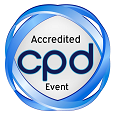
Zhe Wang
Tsinghua University, China
Title: LIBS in China and its quantification development laser-induced breakdown spectroscopy
Biography
Biography: Zhe Wang
Abstract
Laser-induced breakdown spectroscopy (LIBS) has shown great potential in coal analysis, steel analysis, environmental monitoring, etc. Recently, the LIBS community of China has been great expanded and progress has been made to this technology. Low sample-to-sample repeatability of LIBS is the most critical obstacle for accurate quantification and wild commercialization of the technology. In this work, we proposed a set of method to improve both precision (sample-to-sample reproducibility) and accuracy for LIBS quantification. The method includes three steps: 1) the intensities of all spectral lines from every single pulse are converted to a standard state value using a “spectrum standardization” method to reduce the measurement uncertainties to some acceptable levels; 2) the standardized spectra are compared with a large spectral database for identification to check whether the current measured sample is a new sample or has already been in the database with known composition/property information; 3) if the sample is found to be a new sample, a dominant factor based partial least square (PLS) model will be applied to provide quantitative analytical results and the new standardized spectral information and analytic results are inserted into the spectrum database, making the database self-adaptable for future measurement; while if the sample is found to be already in the database, the analytic result will be directly obtained from the database. The proposed method was applied for coal analysis. Results showed that the relative standard deviations (RSD) of carbon for different measurements of the same sample were 0.3%, proving that LIBS is able to provide high reproducibility at least for coal analysis applications. This is the first qualified quantitative application for LIBS with real industrial requirement and the present work has proved the feasibility of LIBS for accurate quantification from technical point of view. The model was also applied for steel elemental analyses using portable LIBS, cement raw material online measurement, and origin identification for jade, with very qualified result for these applications.

